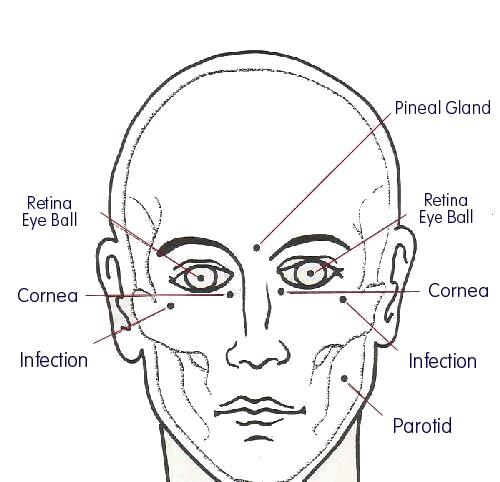EYES REFLEXES AND MORE
Pineal gland
A mall gland that produces melatonin.
The production of melatonin is inhibited when light strikes the retina.
The pineal gland receives nerve fibers from the peripheral autonomic nervous system.
Pituitary gland
(pi-TWO-i-tair-ee)
SYN: Hypophysis (high-POF-i-sis)
An endocrine gland that consists of an anterior lobe (adenohypophysis) and a posterior lobe (neurohypophysis).
The posterior lobe is connected to the hypothalamus by nerve endings that store oxytocin and antidiuretic hormone (ADH).
The list below shows the hormones that are released by the anterior lobe:
ACTH (Adrenocorticotrophic hormone)
FSH (Follicle-stimulating hormone)
GH (Growth hormone)
LH (Luteinizing hormone)
Prolactin
TSH (Thyroid-stimulating hormone)
Salivary Glands:
(Lymphatic system)
Secretes saliva which moistens food and begins the digestive process. Saliva contains salivary amylase, a digestive enzyme, that aides in the breakdown of starch as it moves through the GI tract. There are three pairs of salivary glands.
1. The parotid glands are in the front of and slightly lower than each ear.
2. The sublingual glands are located under the tongue.
3. The submandibular glands are located in the floor of the mouth.
Cornea the clear, front part of the eye.
The cornea is the first part of the eye that bends (or refracts) the light and provides most of the focusing power.
Retina a layer of fine sensory tissue that lines the inside wall of the eye. The retina acts like the film in a camera to capture images, transforms the images into electrical signals, and sends the signals to the brain.
|
